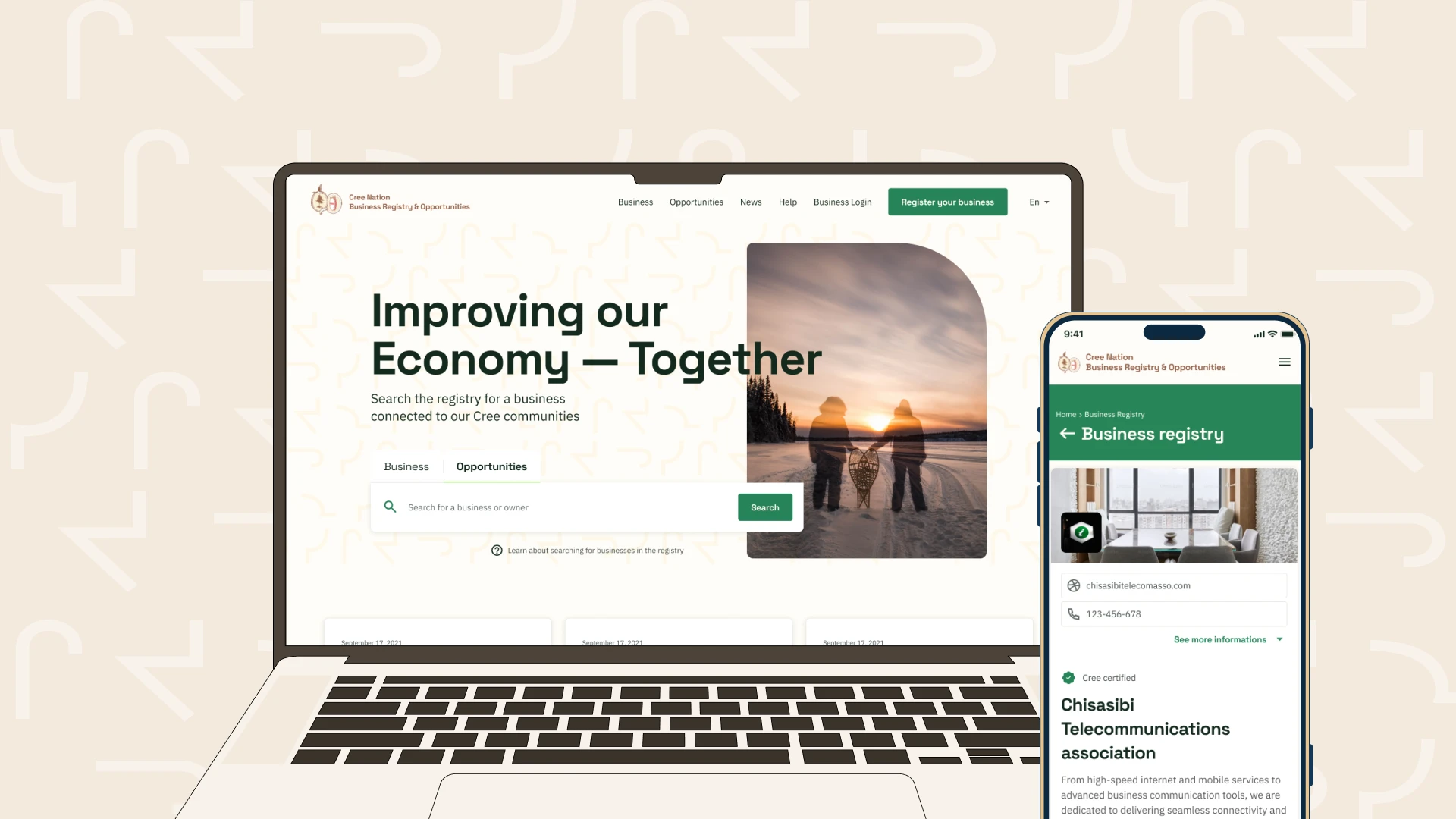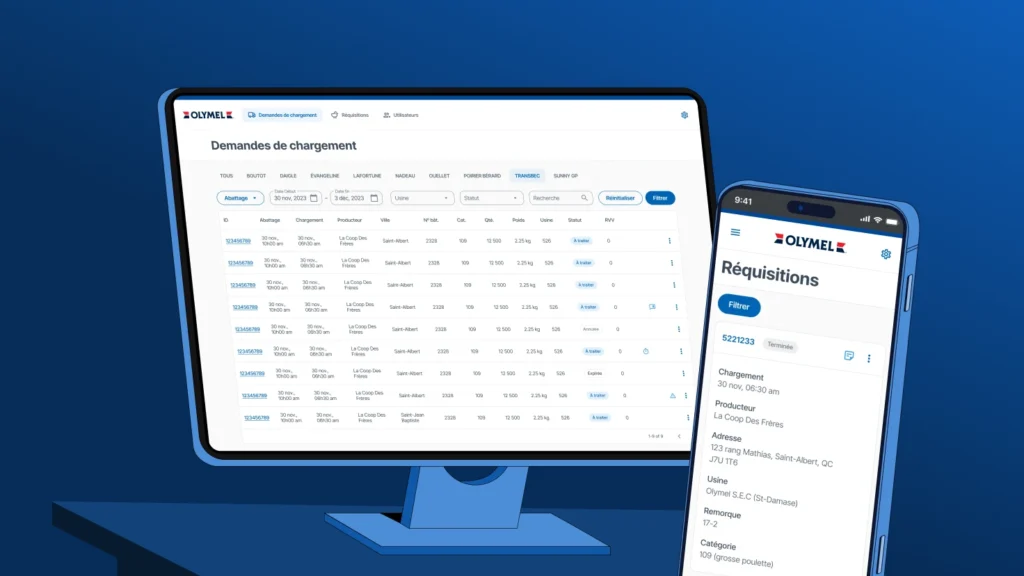Collaborate to Create
For the last several years, our experts involved in the project are proud to be able to create value by supporting the Cree Nation Government and its entrepreneurs.
As is the case for each of our clients, our collaboration methods were adapted to the government’s needs, methodology, and rhythm: the project was sequenced by iteration to progressively manage complexities and priorities.
"nventive’s experts fully took on their advisor role, both when defining the features and when prioritizing and executing them. We worked toward a common vision with transparency and trust, which was one of our teams’ proudest moments."
The Developed Digital Solution
The digital solution developed for the Cree Nation Government was created in several phases. Its final objective was to link businesses with available jobs for all the eleven Cree communities, while also increasing the transparency in the whole contract-obtaining process.
Phase 1
- A search tool to find entrepreneurs and businesses in the Cree community.
- A detailed fact sheet on each business and key information: specialty, contact, legal structure.
- Website registration on Google for each business referenced on the platform.
- Filters to find businesses according to industry, location, season, or legal structure.
- A blog to present news about entrepreneurs in the nation.
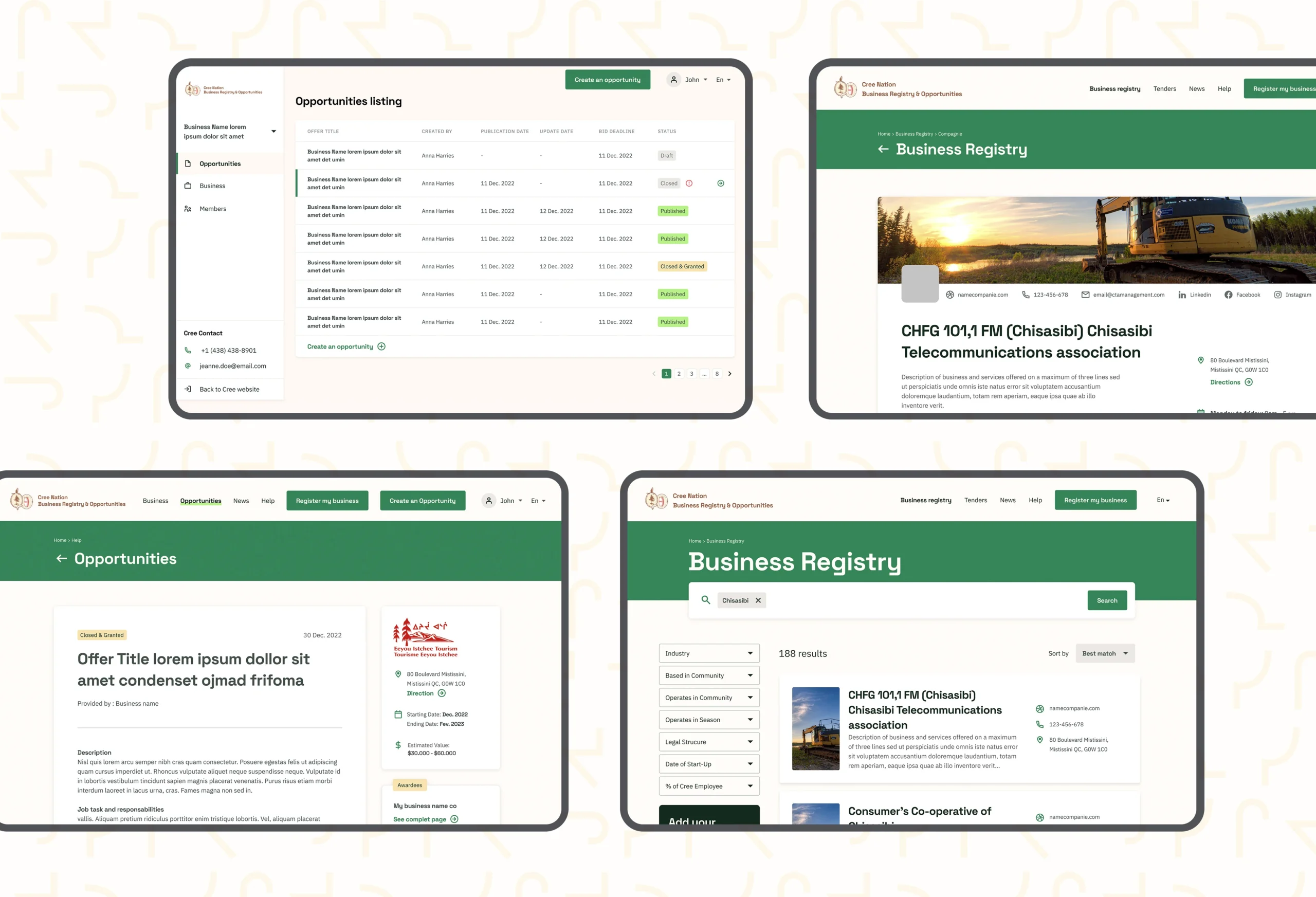
Phase 2
- Publish call for tenders by business users or allow them to respond to a call for tenders.
- Improve the call for tenders search tool with a filter system.
- Offer the possibility of creating notifications linked to call for tenders.
- Provide a client portal where businesses can independently enroll, manage their account, and publish jobs.
Read also: Self-Serve Platforms
The Main Challenges We Overcame
Creating Personas to Define the Digital Solution’s Vision
To understand the breadth of users we were designing for, we took what we learned from several workshops and synthesized 9 personas representing the users from the government, business owners in the eleven communities, and the public. These users would have varying levels of connection with the system itself.
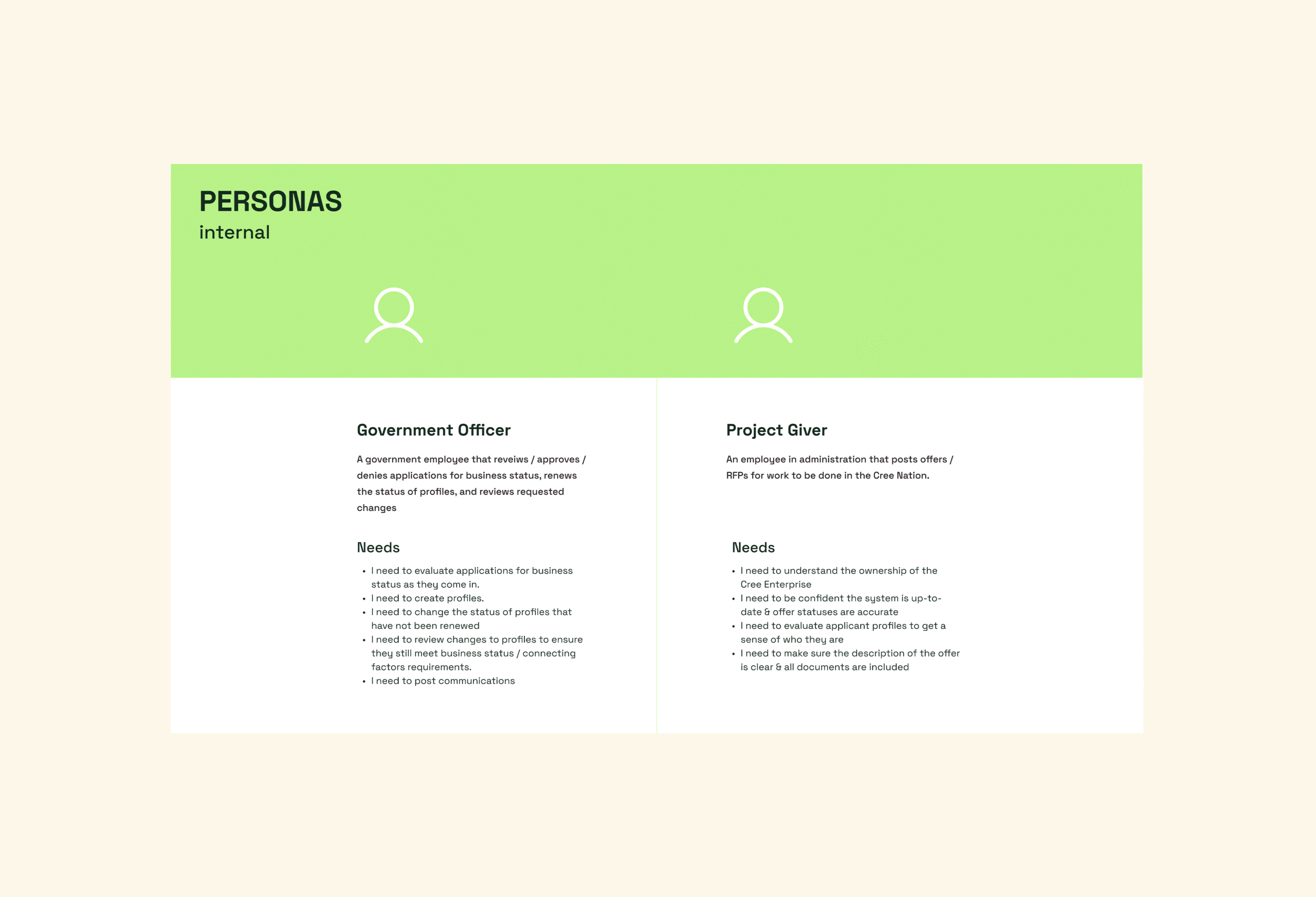
This exercise helped get us on the same page as the client, producing more fruitful weekly meetings as we could link almost everything we were hearing to the needs of various end users. It really helped translate what we were learning into a concept for the system design.
The personas distinguished from one another by the job performed by the user, not demographics. We explored what internal government users and business owners would be doing, with and without factors that connected them to the Cree Nation. By focusing on their needs, attitudes, and expectations relative to their job, we collected more concrete data associated with the personas. This way, we could recruit people for user testing more efficiently. Through these discussions, we were able to refine and improve these personas, and of course, the product itself.
In fact, understanding the personas allowed us to create primary use cases for the future product, which led to a conceptual map of the system. This really helped to plan discussions between nventive and the Cree Nation Government, which got us to the next phase of the project.
Going From UX to UI
The user interface required a lot of research for its creation. First, our teams made sure to get general graphic instructions from the Cree Nation Government, and to analyze similar organizations and current trends to present a style guide that combined modernity and tradition. Indeed, Cree identity and heritage are orally transmitted, and a few websites trace this legacy through audio segments of elders. This culture is based on the respect of life, harmony with the environment, and consciousness of the impact our actions have on our surroundings.
The Cree Nation is one big family, composed of several groups with different traditions, languages, and knowledge that coexist. Tradition is an important aspect of their identity, which was an element we wished to reflect. This element materialized through the creation of existing patterns on hand sewn blankets.
The naturally hued colour palette is rooted in green and clear yellow tones, and merges into modernity with bright colours like vibrant green.
‘‘Our goal was to push for a graphic identity that was both contemporary and respectful of the Cree Nations’ culture and mindset’’, says Alexia Teissier, UX and UI designer.
This way, we were able to create a set of tools for the project, in the form of components and microactions, to ensure the project’s longevity and maintainability.
All these elements, which were created during the first phase, greatly facilitated the transition toward a second phase. This second phase was therefore simple and quick since the graphic style was already solidly established.
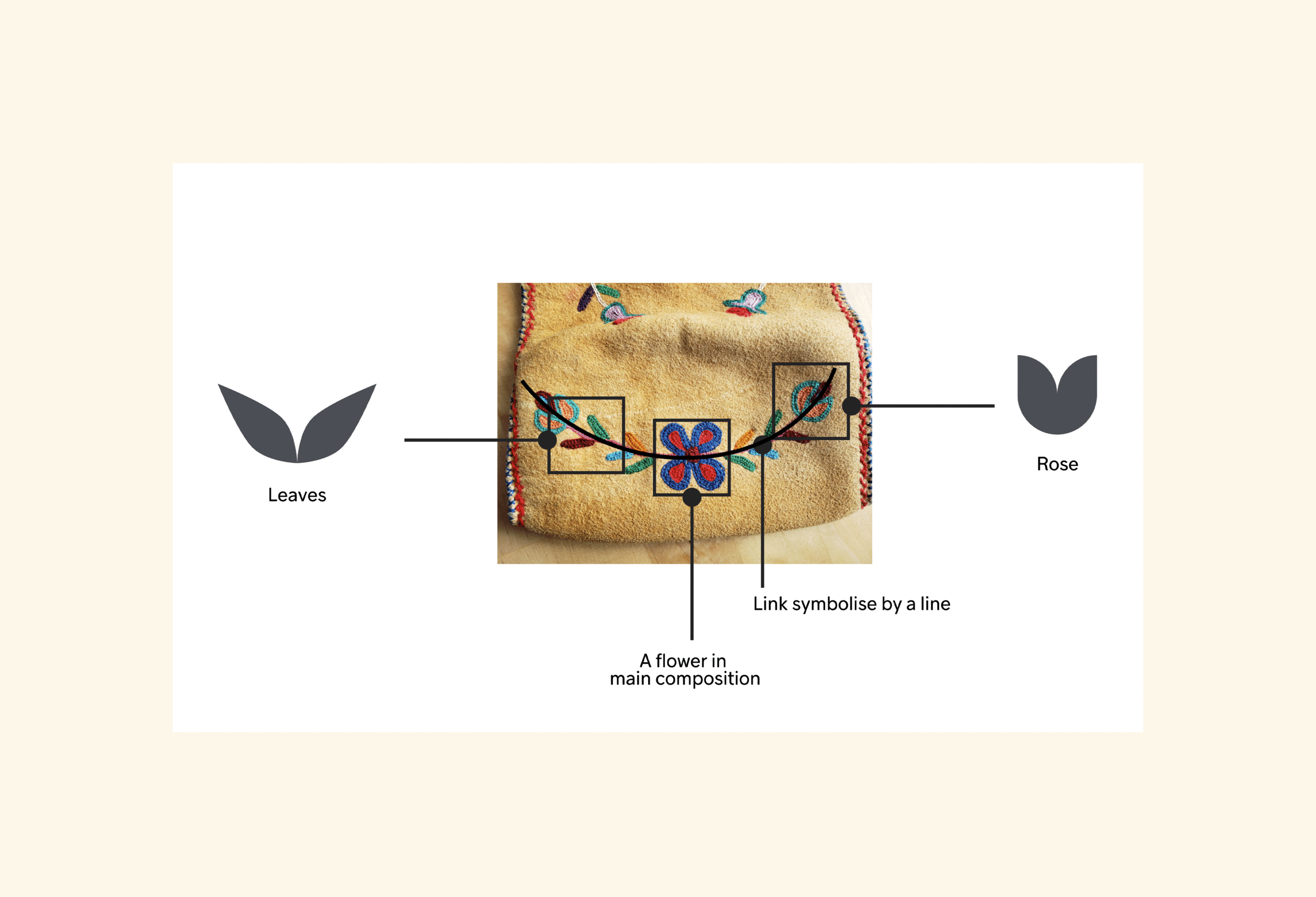
Tech Choices to Achieve the Digital Solution’s Objectives
All the choices we made about the technological environment were oriented toward achieving the platform’s objectives:
For the back-end development, the headless, open-source content management system (CMS) named Strapi was chosen to allow for front-end development in React, which offered a more complete platform, since some elements were already available and operational. As for back-end development, we opted for Meilisearch to enable the quickest displaying of results possible for the users.
Karine Savaria, back-end developer, explains that ‘‘this choice also enabled us to remain up to date with the most efficient and widely approved web technologies, which guaranteed optimal future add-ons.’’
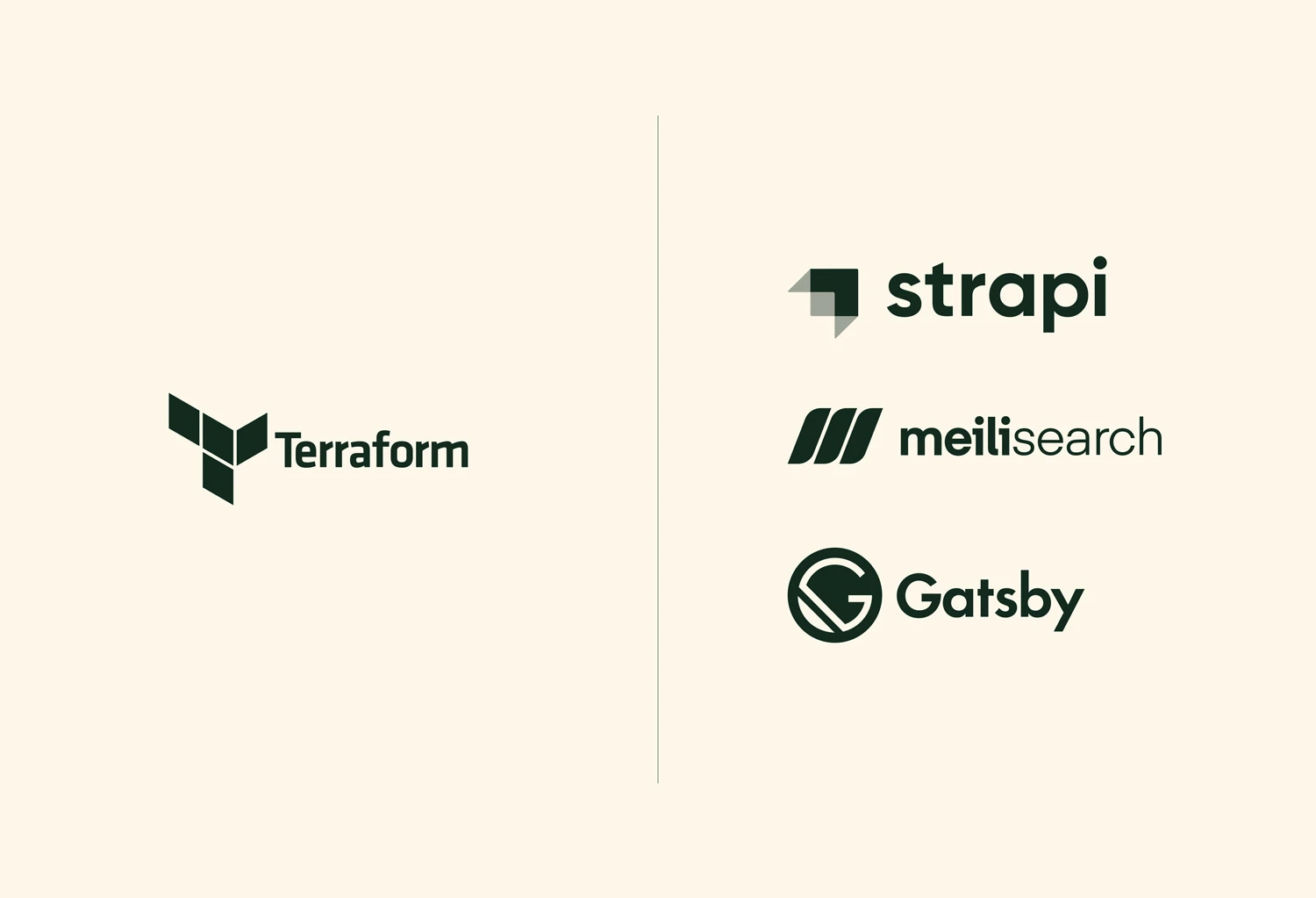
For the frond-end development, we used the Gatsby tool for several reasons: it offered support for the visual requests used in Strapi and it made the most of search engine optimization (SEO) by loading pages very quickly.
As for infrastructure, the ‘‘infrastructure as code’’ method of development was applied with Terraform. The goal was to code the cloud architecture in files to ensure configurations were reduced in different environments. This method also allowed us to guarantee security standards and to give more consistency to the infrastructure.
Francis Venne, IT security lead, also ensured ‘‘that the whole website use security pipelines to deploy different resources to minimize the risk of errors during deployment.’’
This web platform is intended as a cornerstone that allows the Cree community to benefit from maximum transparency and entrepreneurial visibility. It generates an economic value, as well as supports and improves professional efficiency through a tool that meets each of its key user’s needs.
Lastly, the platform will enable the Cree Nation Government and its departments to make decisions based on available data.
‘‘Working on this web development project for the Cree Nation Government was an incredibly gratifying experience. Knowing that our work had a positive impact on the community and brought real added value is a source of pride for the whole team.’’
